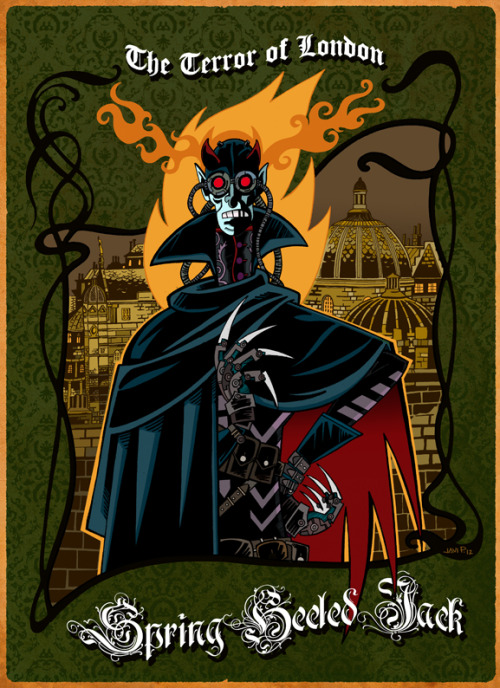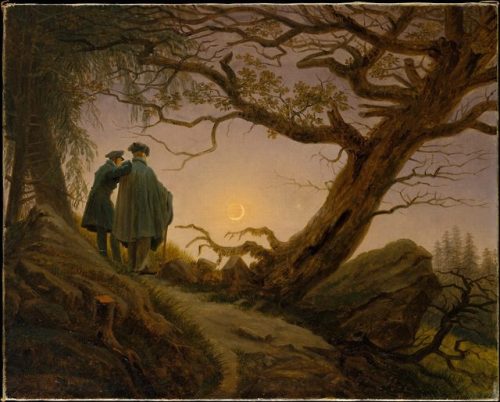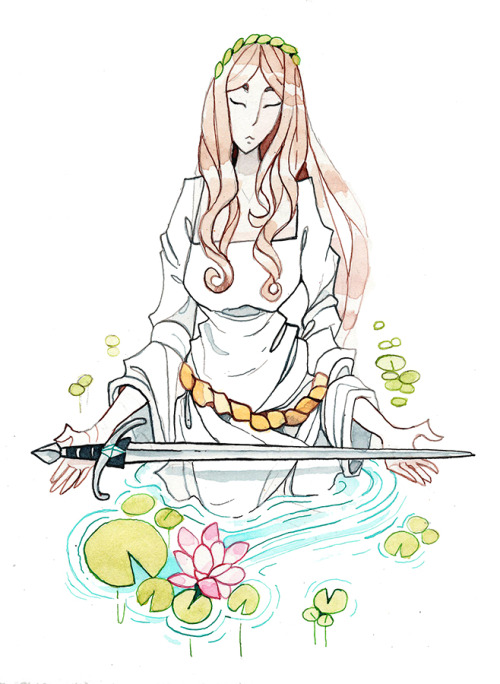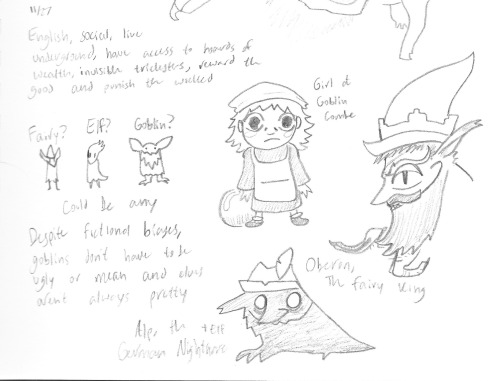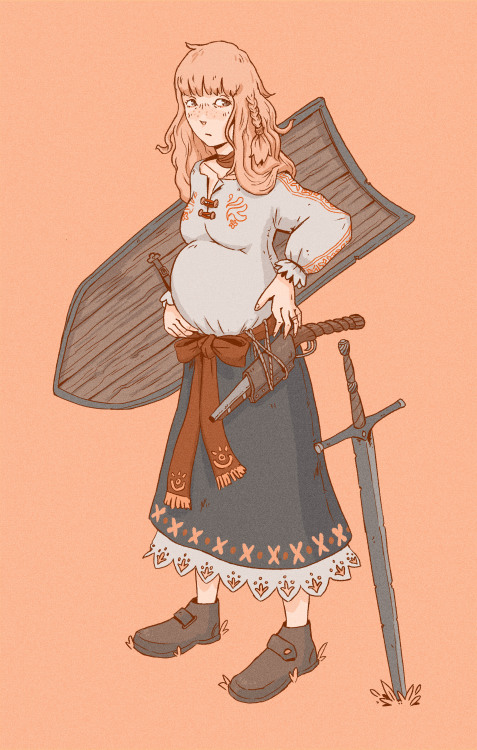#english folklore
The Tale of Old Mother Shipton’s Cave and the Petrifying Well
Though there is marked controversy surrounding the figure of folk legend known as ‘Mother Shipton’, mostly in dispute of the validity of her legend, many would tell you that she was not only real but an extremely powerful prophetess. The tale has been told over and over, often in different forms and different publications. One of the more credible sources comes from the writing of Richard Head, said to be a true account of her life, birth and prophecy that was discovered in a Yorkshire monastery. Regardless, we have no way of knowing the truth and this is just one version of how the tale goes.

Who Was She?
Mother Shipton, whose real name was Ursula Southeil, was born in July 1488 to 15-year-old mother Agatha on the outskirts of the market town of Knaresborough, Yorkshire, England. In said cave sat a mystical pool that turned all that entered it to stone. On the day of her birth in that cave, it is said that a terrible and deafening rumble of thunder boomed across the sky as the babe came from her mother. The stench of sulphur filled the cavern as a huge, grotesque baby was born.
After 2 years of raising her in the cave, unable to stand the sight of the child and fearing the accusations being thrown that Agatha had laid in bed with the devil himself to bring such a creature into existence the young mother gave the child to a foster mother and went to spend the rest of her days in a convent. When asked, she would never once reveal the identity of the father.
Childhood
Ursula soon learned that she was different from other children. Adults called her ‘The Devil’s Child,’ likely from a combination of her appearance and the odd circumstance of her birth. Other children would taunt her, accuse her of casting spells of sickness on people of the village. Despite now having another mother, Ursula would still spend most of her days around the cave where she was born. She studied herbal remedies, taught herself how to heal and how to harm with flowers of the forest.
Despite the hatred and scorn she received from others, Ursula did find a partner; in Tobias Shipton, a carpenter. They married when she became 24 years old, but Tobias died a few years later. Still, Ursula kept the Shipton name.
Prophecy
In her adult life, she began to gain new gifts. They came slowly at first, small premonitions of insignificant things, but soon she began to grow quite the reputation for prophecy. It’s said to have started as so; A neighbour, who had been the subject of the theft of a very expensive item of clothing, came to ask for her to help. Ursula promised that the clothes would be returned the very next day. True to her word, the next day the thief arrived on the doorstep of the theft victim and handed the garments over.
This set off a craze in the village; soon enough people were coming to Ursula for her services for it to become a career. As she got older and more and more prophecies came true, people from far villages would even come to ask Ursula, or Mother Shipton as she became known in her old age, for her wisdom, prophecy and magical ability. She predicted the dissolution of the monasteries, the Great Fire of London, the Spanish Armada and even modern day inventions such as the car and ships of iron. Mother Shipton also predicted the end of the world in 1881, which seems to not have occurred, but we won’t hold that against her.
The Petrifying Well
Formally known as the Dropping Well, it is said that there is no other well like it in England. The side of the well is said to have a skull-like appearance. During the early life of Ursula, or Old Mother Shipton, other members of her village would refuse to go near the cave, fearing that touching the waters would turn them to stone.
In the hight of her popularity, however, visitors from all over the country would come to bathe and drink from the well. A quote from the Mother Shipton Website:
The earliest written reference to the well was by John Leyland, antiquary to Henry VIII. He visited the well in 1538 and noted that it was very well-known and visited by many to drink and shower under its falling waters, as they were believed to have miraculous healing powers. In the early 1600s samples of water were examined by a medical physician. His report concluded that the waters from the well were a miracle cure for “any flux of the body”!
Thanks to modern science, we are able to uncover the mystery of the well today. The petrification of objects that stayed in the well for an extended period of time is actually due to a very high mineral content within the water. Needless to say, you shouldn’t be drinking this. The gift shop at the site of the well these days actually sells items that have been turned to stone, which can be seen hanging from the well as you visit.
The Legend Continues
After a life of prediction, magic and herbal potion making, Mother Shipton passed away of natural causes in 1561. Despite this, her legend is still as popular in Yorkshire and all of the Midlands and the North as it has always been. The cave in which she was said to be born is now a well-known tourist destination, which you can visit to this day.

Sources:
- The Secret World Of Witchcraft by Jason Karl
- http://www.mothershipton.co.uk
- https://www.visitharrogate.co.uk/things-to-do/mother-shiptons-cave-p1203301
If you found this post interesting, enjoyed the story of Old Mother Shipton and want to help support my writing, consider leaving asmall tip:)
Post link

Day 10: Flowing
Image: August Heinrich, Two Men Contemplating the Moon
“In parts of Yorkshire it was believed to be prudent to give shoes to the poor, because every man after his death would have to pass along stony country. Those who had donated shoes in their lifetime would be met by an old man who would return to them the identical pair they had once given away for charity.”
-Keith Thomas, Religion and the Decline of Magic (1971)
Post link








, .
, .
Bealtaine, May Day, was once considered the first day of summer.
On the eve of May we feasted, scorched bones and bread, prayed for protection, danced, and sang.
The next day, still full and light headed, we went to a friend’s home to cover ourselves in flowers, dance with ribbons, and make some butter.
The early flowers that I’m used to bloom late in Maine. Still, everything is waking up.
Beannachtaí na Bealtaine oraibh.
Demetri for 2, 4, 9 who did 3?
…
[Image descriptions:
(1) Demetri smiling at the camera wearing a flower crown in front of the maypole. (2) Me, smiling at the camera wearing flower crowns in front of the maypole. (3) Maggie, myself, Demetri, and Noel are putting ribbons up on the maypole in the lawn. (4) A group of people standing in a circle holding colorful ribbons that connect to the pole off camera. We ate wearing flower crowns. (5) Photo from below of new, colorful ribbons woven along the maypole with a flower crown at the top of it. Behind it is blue sky and treetops. (6) A simple porch and screen door with a porch light and mailbox. Yellow flowers and grass hang in a bundle from the porch light, and yellow flowers are strewn in front of the doorstep. (7) Medium sized statue of Diana wearing a flower crown and a red ribbon. There is a drum, an archery bow, lightswitch, thermostat, picture frame, and a horn on the wall behind her. (8) An indoor selfie with my flower crown. (9) Video of Maggie and me dancing on pieces of plywood in a lawn. Our foot rhythms are accompanying a song in Irish that we are singing together. I am wearing a flower crown. Behind us is a maypole, a bonfire, and a green house on the other side of a fence. End descriptions.]
Don’t let the date fool you, this is actually from 11/27/2020. It’s a little experiment using folklore/TDG sensibilities compared to modern fantasy ones.
Quick! You are in the English countryside and have encountered a supernatural being. It is social, lives inside a hill, has access to immense wealth, can become invisible to harass human beings, rewards the good, and punished the bad. Is it:
a) a fairy
b) an elf
c) a goblin?
The answer is… you don’t know! It could be any of the three, as, depending on the specific locality in question, there may not be any meaningful difference between the three. In modern fantasy there is a strong pressure to canonize certain traits to form a homogeneous species out of folkloric stories. Certain names are attached to these and thus come to be synonymous with them. But in the original stories they come from, these names don’t carry as much power as one might think. The story of Goblin Combe shows goblins being just as pretty and sweet as regular ol’ fairies (they do disappear a guy, but that’s on par for fairies). The German Alp is derived from the word “alf”, or elf, and sits on people’s chests to cause nightmares or lick their nipples to draw blood like a vampire bat. And Oberon, aside from his appearance in A Midsummer Night’s Dream, is a dwarf who literally derives from Alberich. Despite what connotations the names might imply they are just names and can change in meaning or be switched around as a story-teller desires. Which isn’t to say that there are no mean and ugly goblins or pretty and winged fairies, just that there is no “one true” version of the creatures.
Another reason why “A Guide to Household & Garden-side Pests” (Anon) is trite, in Dwoll’s opinion. The compilers who stolehis notes (re: found them after he was missing for a while without knowing who wrote them) didn’t have any of the real first-hand experience with the pests they wrote about. So they delineated species and families arbitrarily and failed to acknowledge the flexibility of the supernatural world, which they probably never knew about in the first place! Oooooh it just makes him so mad.
Post link

Samhain!
Without morris dancing the Wheel of the Year won’t turn, so the morris-wolves are dancing under the moon of White Samhain.
My most dear Happy Kelpie morris-team;)))

Commissions are open:)
Since people seemed to enjoy my Tam Lin drawing, here is another ballad character. I guess she isn’t named in the narrative. But here is Geordie’s wife challenging the judge for her husbands life.
“But six pretty babes I had by him
The seventh one lies in my body
And I would bear them all over again
If you give me the life of my Geordie”
“Your Geordie will hang in a silver chain
Such as we don’t hang many
And he’ll be laid in a coffin brave
For your six fine sons to carry”
“I wish I had you in a public square
The whole town gathered around me
With my broad sword and a pistol too
I’d fight you for the life of my Geordie”
Have a few other folk songs I want to illustrate so stay tuned!
Post link

